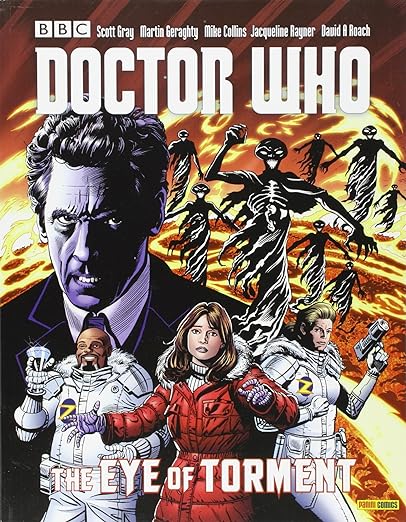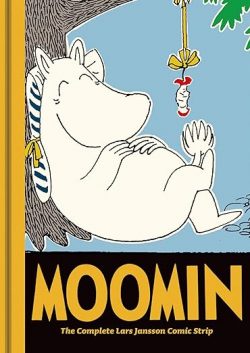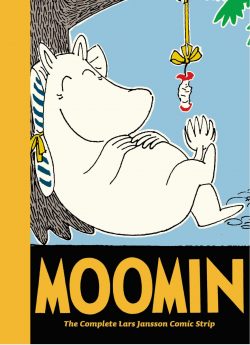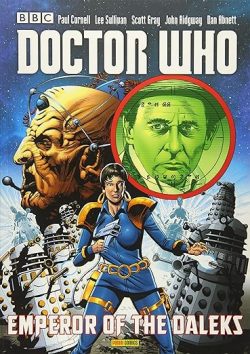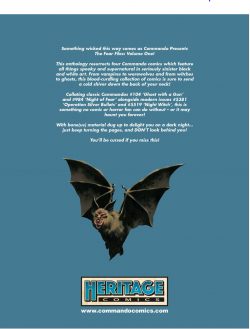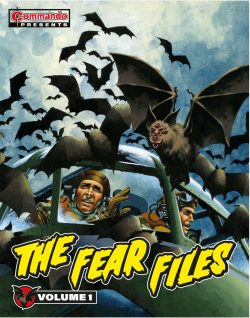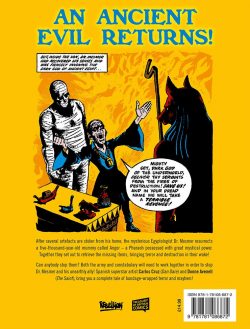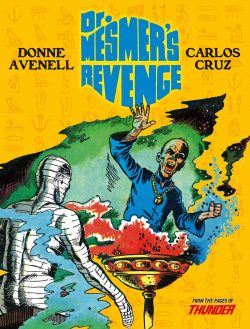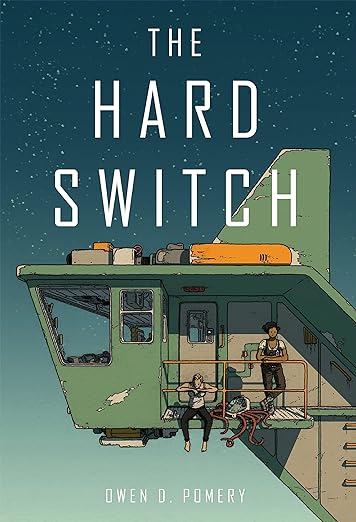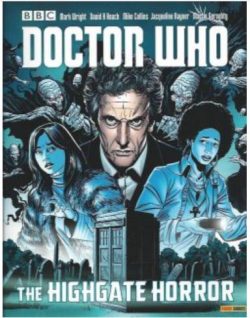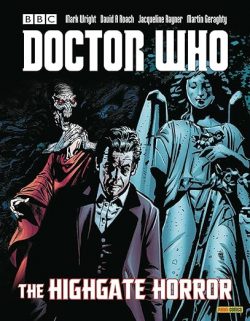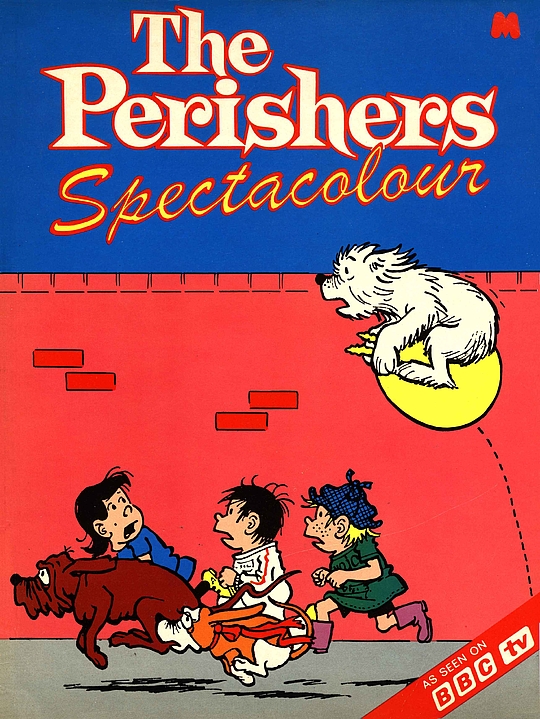
By Maurice Dodd & Dennis Collins (Mirror Books)
ISBN: 0-85939-169-8 (album PB)
I plug these little chaps – and the wonderful feature they starred in – every few years because the work is wonderful and quintessentially British. I so wish they were still around to take aim at today’s governments, autocrats, too-common people and general discommodiousness as well as helping us accommodate the impending end of the world with a smile…
Although written almost entirely by Maurice Dodd throughout its 48-year history, the buried National Treasure that is The Perishers almost began life in 1957 when artist Dennis Collins and writer Bill Witham (who went on to huge success with uniquely innocent everyman Useless Eustace) batted around an idea with cartoon editor Bill Herbert. Some daily exploits tribulations, ruminations and misadventures of a bunch of typical kids (circa the latter half of the 20th century at least) were first published in the Manchester edition of The Daily Mirror in February 1958. However, after only a few frankly mediocre months the wacky adventures of Maisie & Marlon were withdrawn and retooled.
Jack-of-all-trades, budding artist and advertising whiz-kid Maurice Dodd was then taken aside by his service comrade and drinking buddy Herbert (they had been paratroopers together) and offered a go at revising the strip. The freelance designer jumped at the chance to reinvent the characters for what would become a meandering but beautifully illustrated, all-ages feature simply stuffed with untapped potential.
Drawing on his own life (he would describe it as “shamelessly pilfering”), Dodd improvised a plethora of new characters – animal and human (although with this strip distinctions are loose and hard to defend). He also rescued and rehabilitated an early 1958 casualty of the original set-up in the unkempt and ill-maintained person of laconic orphan/philosophical dilettante Wellington. This bewildered and bemused overly-anxious symbol of the post-war era was a street urchin living on his wits but still attending school and enduring all the daily trials and indignities of British youth…
Relaunched in October 1959 (Happy 65th, lads, lasses, loons and assorted mildlife!) in London and national editions, revamped strip The Perishers quickly caught on, becoming a morning mainstay for generations of Brits (and assorted colonies), by blending slapstick and surreal comedy with naive charm. At its best it was a miniaturised modern romance melodrama liberally laced with sardonic cultural commentary – apparently and retroactively – set in the South London Borough of Croynge (an amalgam of Croydon and Penge) but still looking like any post-industrial northern city familiar to generations of kids…
Here Maisie loves Marlon, Marlon loves fashion and “inventing”, Wellington loves sausages and Boot, Boot loves sausages and more sausages but is caught in an autocratic duty of care for the little kid who cooks and cleans for him.
Particularly rewarding was a continuing and wonderfully twisted faux misperception of contemporary politics and the burgeoning influence of advertising and commercial media. From the start The Perishers was superbly illustrated, conjuring in a few judicious lines and cannily applied grey tones a communal urban wonderland we all knew as kids: a familiar if not ubiquitous post-war melange of shops and streets, building sites and overpasses, alleys and parks and fields where we could get on with our adventures and no adults could interfere or spoil the fun. The unsavoury old git in me still hungers in absentia on behalf of the youth of today who will never experience such freedom without being labelled “neglected”, “at risk” or possibly just “feral”…
The primary protagonists are Wellington and his old English Sheepdog Boot (actually the mutt is only “sort of a dog…” since the wily, chancer/shaggy raconteur considers himself a Manorial Milord “sufferin’ under the curse of a Gypsy Wench”). They are ably unsupported by the formidable Maisie, a thoroughly modern miss torn between the fashionable self-delusion that the boy of her dreams feels likewise… and sweets. This frail flower has an unsurpassed capacity for greed and inspirational violence, but it vies with a tremendous unslaked passion for the aforementioned Marlon, whom she thinks is what she wants. And sweets. But really the Romance. With sweets.
Cool, suave and debonair are just three of the many, many words Marlon doesn’t know the meaning of, but lots of girls at school fancy him anyway. If he grows up, he wants to be a brain surgeon or a bloke wot goes down sewers in great big gumboots…
Being on his own and fiercely independent, Wellington capitalises on every opportunity to support himself with sordid scavenging and shoddy schemes – usually involving selling poorly constructed carts and buggies to Marlon who has far more money than sense. To be honest, Marlon has more noses than sense…
Maisie is a shy beautiful maiden waiting for her true beloved to sweep her off her feet – and if he doesn’t, she gives him a thorough bashing up and nicks his sweets. Other unreasonable regulars include Baby Grumplin’ – Maisie’s toddler brother and a diabolical force of nature; Plain Jane – a girl who asks too many questions; and dapper Fiscal Yere: smugly complacent go-getting son of a millionaire and another occasional sucker for Wellington’s automotive in-expertise. Kids like him are what made today’s world what it is…
On the equally esoteric anthropomorphic animal front, extremely erudite Boot often contends with stroppy ducks, militant squirrels, socialist revolutionaries Fred the Beetle and his long-suffering wife Ethel, South Asian bloodhound/journalist B.H. Calcutta (Failed) and over-the-hill canine lady of leisure Tatty Oldbit (The Sailor’s Friend), militant teutonic tortoise Adolf Kilroy and a nicotine-addicted caterpillar who stunted his growth through old dog-ends and became Fred’s inseparable comrade/doctrinal competitor in the struggle against capitalistic and canine oppression. This little Trot is also an implacable rival for any food or other societal detritus the Bolshevistic bug might find…
Utterly English, fabulously fantastical and resoundingly working-class, the strip generated 30 collections between 1963-1990, 4 Big Little Books, 5 novels and 2 annuals as well as an audio record and – in 1979 – an immensely successful animated TV series. That last was the spark for this carefully curated album released in the same year to tie-in with the toned-down-for-TV frolics reprinting colourized strip and extended running gag sequences bunched into chapters for your delectation.
We start off gently with ‘Boot Rules – OK’ as Wellington struggles to keep them whilst the dog contributes nothing other than sardonic criticism, acts as straight man to the other bestial extroverts at large in the streets and plans his eventual takeover of the planet… once he overcomes that cursed lack of thumbs…
‘Car Sales’ delivers 16 strips on the eternal war between Wellington and Maise as the former seeks to foist off a succession of shoddy homemade soapbox vehicles on a lad whose real purpose in life is buying sweets for his ladylove. If only Marlon could be made to remember that…
The well-heeled simpleton has needs and desires of his own, primarily becoming a ‘Brain Surgeon’ – even though this section proves why that will never be so – and is followed by a sampling of bargain basement Antichrist Baby Grumplin’ turning the streets and houses upside down hunting for his latest appalling pet ‘The Tigerworm’ and encompassing asides with his young sibling “the New Baby” because ‘It’s Spring Again’, before back in the Wild Kingdoms ‘Tatty Makes Trouble’ for Boot and B.H. Calcutta (Failed).
Wellington’s best pal then faces ‘The Nazi Invasion’ as Adolf Kilroy acts like his totalitarian preincarnation and annexes Boot’s bowl and despatches an Axis of insects to occupy all the best food sources…
Total war is averted by the advent of protracted human manoeuvres intended to accomplish ‘Boot’s Bath’ and rapidly escalating to riots in the streets exacerbated by Maisie’s latest campaign to become ‘May Queen’: again deploying hulking harridan Beryl Bogey (the class “black belt, cross country netball champion”) to canvass votes with extreme menace…
For sheer carnage and chaos only one thing beats Baby Grumplin’ on his ‘Space Hopper’ and that’s what happens here when attempts by the infernal infant’s elders to confiscate said bouncing balloon lead to Boot being trapped on it and boinging about like a blockbuster blobby bomb. Largely unharmed, he soon retreats to a place of canine recuperation only to find his doggy brethren all seeking to pinch his objet d’amour in ‘A Bone to Pick’…
Because it was the past and we just didn’t value juvenile life as much as now, nobody thought anything amiss at a dog and four kids under ten going on an annual camping trip to the seaside: free for a fortnight from all adult supervision (oh, such innocent times!). Here ‘On Holiday’ sees the queasy quartet and Boot romping in the surf at their regular beach resort: playing tricks, scoring points indulging in mockery and even trying a ‘Swimming Lesson’ (for Boot), as well as indulging in the yearly habit of terrorising the denizens of a rockpool.
Every summer, the kids would encounter and endure sun, surf and the crabs who worship the uncannily canine ‘The Eyeballs in the Sky’ which perennially manifested in their isolated “Pooliverse”, auguring mayhem, madness and an unceasing procession of prophets, pundits and pestilential conmen crabs, before the real world would intrude again.
After reluctantly and hilariously ‘Striking Camp’, more time is happily wasted mucking about with an ‘I Speak Your Weight’ machine before finally staggering back to ‘Home, Sweet Home’, only to find the current campaign to remember a day of national importance has kicked off in ‘Happy Birthday, Wellington’ with the usual lukewarm loot results accounted for until ‘But on Monday…’ proves both boy and dog should be careful what they wish for, if what they wish for is a skateboard. Apparently there’s no brakes or steering wheel and they are magnetic if you’re riding a spacehopper coming the other way…
The manic buffoonery then concludes with short bursts of lunacy and largesse in strips all embracing a spirit of ‘Merry Christmas’…
Dennis Collins magnificently and hilariously illustrated the strip until his retirement in 1983, after which Dodd himself took up the pens and brushes. Eventually artist Bill Melvin took over the art chores whilst Dodd scripted until his death in 2006. Once the backlog of material was exhausted The Perishers finished on June 10th of that year. Soon after, The Mirror began reprinting classic sequences to the general approval of everyone, so perhaps it’s not too much to hope that eventually all those classic collections will be available to all…
Quite frankly, it’s what we need and what I deserve…
© 1973 Daily Mirror Newspapers Limited/Film Fair. © Mirror Books Ltd 1979.



